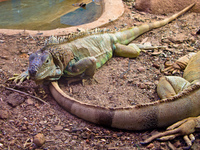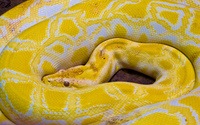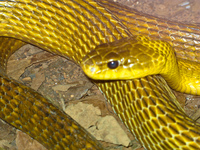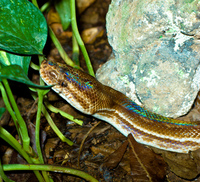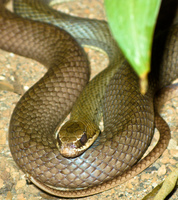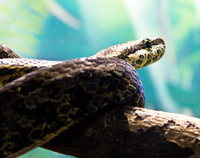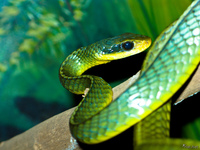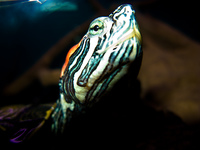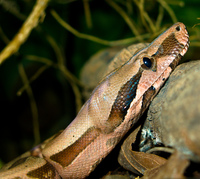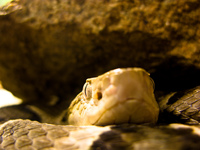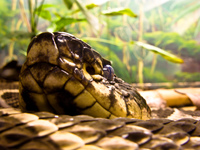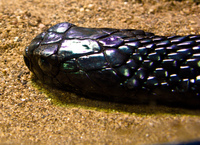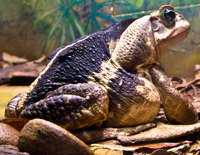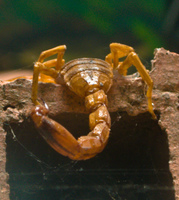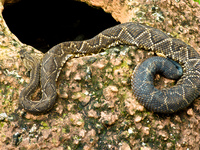instituto butantan
Burmese Pythons are light-coloured snakes with many brown blotches bordered in black down the back. The perceived attractiveness of their skin pattern contributes to their popularity with both reptile keepers and the leather industry. The pattern is similar in colour, but different in actual pattern to the African Rock Python (Python sebae), sometimes resulting in confusion of the two species outside of their natural habitats.
Snout acuminate, projecting, without dermal appendage, rather more than twice as long as the eye. Internasals usually in contact with the labials; one to four small loreals between the prefrontal and the labials ; frontal as long as its distance from the end of the snout or a little longer, a little longer than the parietals; one preocular, in contact with the frontal; two postoculars; temporals 2+2 or 3+3, rarely 1+2; upper labials 9, fourth, fifth, and sixth entering the eye; 4 lower labials in contact with the anterior chin-shields, which are shorter than the posterior. Scales in 15 rows, usually faintly keeled on sacral region. Ventrals 203-234; anal divided; subcaudals 167-203, Bright green, pale olive, or grey-brown, with a yellow line along each side of the lower parts; interstitial skin of the neck black and white. Feeds on small reptiles.
The Red-Eared Slider (Trachemys scripta elegans), known most commonly in the UK as the Red-Eared Terrapin, is a semi-aquatic turtle belonging to the family Emydidae. It is a subspecies of Pond Slider. It is a native of the southern United States, but has become common in various areas of the world due to the pet trade. They are popular pets in the United States, the Netherlands, Canada, Japan, and the United Kingdom.
The Boa constrictor (Boa constrictor) is a large, heavy-bodied species of snake. It is a member of the Boidae family found in Central America, South America and some islands in the Caribbean. A staple of private collections and public displays, its color pattern is highly variable yet distinctive. Ten subspecies are currently recognized, although some of these are controversial. This article focuses on the species Boa constrictor as a whole, but also specifically on the nominate subspecies Boa constrictor constrictor.

